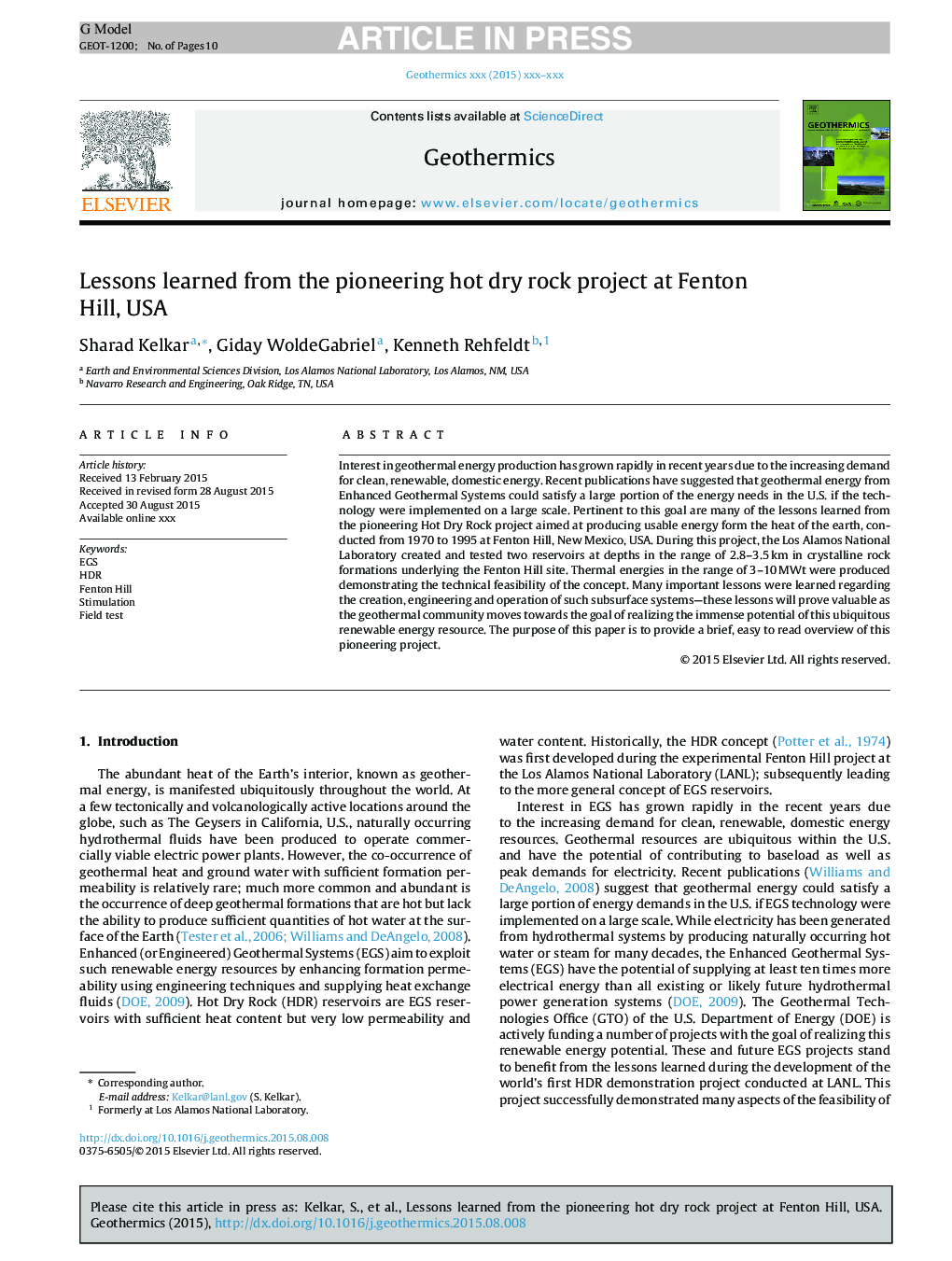| Article ID | Journal | Published Year | Pages | File Type |
|---|---|---|---|---|
| 8088816 | Geothermics | 2016 | 10 Pages |
Abstract
Interest in geothermal energy production has grown rapidly in recent years due to the increasing demand for clean, renewable, domestic energy. Recent publications have suggested that geothermal energy from Enhanced Geothermal Systems could satisfy a large portion of the energy needs in the U.S. if the technology were implemented on a large scale. Pertinent to this goal are many of the lessons learned from the pioneering Hot Dry Rock project aimed at producing usable energy form the heat of the earth, conducted from 1970 to 1995 at Fenton Hill, New Mexico, USA. During this project, the Los Alamos National Laboratory created and tested two reservoirs at depths in the range of 2.8-3.5Â km in crystalline rock formations underlying the Fenton Hill site. Thermal energies in the range of 3-10Â MWt were produced demonstrating the technical feasibility of the concept. Many important lessons were learned regarding the creation, engineering and operation of such subsurface systems-these lessons will prove valuable as the geothermal community moves towards the goal of realizing the immense potential of this ubiquitous renewable energy resource. The purpose of this paper is to provide a brief, easy to read overview of this pioneering project.
Keywords
Related Topics
Physical Sciences and Engineering
Earth and Planetary Sciences
Geochemistry and Petrology
Authors
Sharad Kelkar, Giday WoldeGabriel, Kenneth Rehfeldt,
